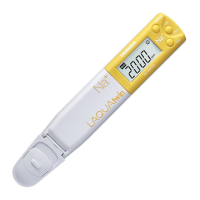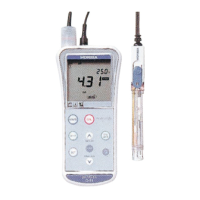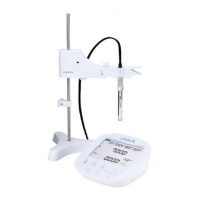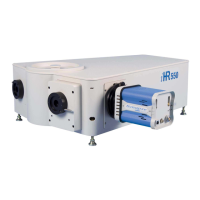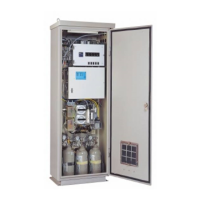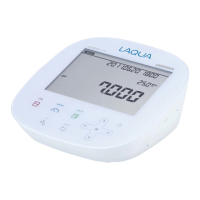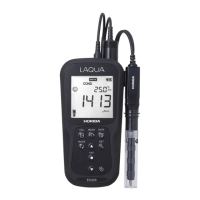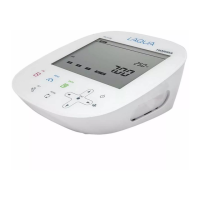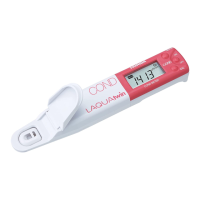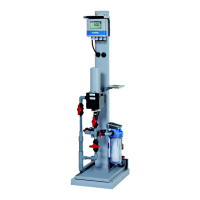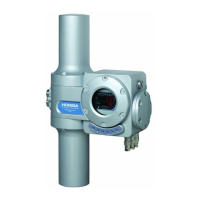
Do you have a question about the horiba NAVI F-51 and is the answer not in the manual?
| Brand | horiba |
|---|---|
| Model | NAVI F-51 |
| Category | Measuring Instruments |
| Language | English |
Details HORIBA's warranty terms and exclusions.
Policy on reprinting or copying the operation manual.
Conforms to EMC and Electrical Product Safety Directives.
Compliance with FCC limits for Class A digital devices.
Explains meaning of WARNING and CAUTION labels.
Important safety guidelines for meter operation.
General warnings on handling and use.
Recommended environments for operation and storage.
Guidelines for safely moving the instrument.
Instructions for proper disposal of the meter and solutions.
List of items included with the HORIBA pH meter.
Overview of the pH meter's various capabilities.
Detailed description of meter body and display components.
Explains the function of each key on the meter.
Instructions for assembling the electrode stand.
Step-by-step guide for connecting electrodes.
Procedure for battery replacement.
Guide for connecting the AC power adapter.
How to power the pH meter on and off.
Initial settings needed before taking measurements.
Explains Instantaneous and Auto Hold measurement modes.
How to switch between measurement modes.
Detailed operational flow for pH measurement.
Detailed operational flow for ORP measurement.
How to store and recall measurement data.
Accessing and viewing past calibration records.
Instructions for viewing and setting the internal clock.
Overview of various meter configuration options.
How to access the meter's settings menu.
Configuration of standard solutions for pH calibration.
Setting up manual or automatic temperature compensation.
Setting reminders for periodic calibration.
Assigning unique IDs to measured samples.
Accessing various maintenance and test functions.
Important safety and operational notes for RS-232C use.
Overview of available commands for meter communication.
Commands to control meter operations remotely.
Commands for requesting and receiving meter data.
Practical guide for PC communication using HyperTerminal.
How to attach compatible printers to the pH meter.
Configuration of printer parameters for optimal output.
Situations and events that trigger printer output.
Examples of data formats for printed outputs.
Procedures for maintaining pH and ORP electrodes.
Identifying and resolving operational issues and errors.
List and explanation of error codes displayed by the meter.
Troubleshooting when nothing appears on the display at power-on.
Diagnosing and resolving unstable measurement readings.
Addressing slow measurement responses from the meter.
Troubleshooting situations with no response or a static reading.
Understanding causes for a blinking measured value.
Troubleshooting issues with the temperature display.
Addressing inconsistent or non-repeatable measurement results.
Resolving issues when the printer fails to print.
Principles and factors affecting pH measurement accuracy.
Principles and factors affecting ORP measurement.
Technical specifications of the pH meter.
Lists the factory default settings for the meter.
Visual summaries of meter operational procedures.
Wiring diagrams for connecting accessories.
Lists available spare parts and optional accessories.
